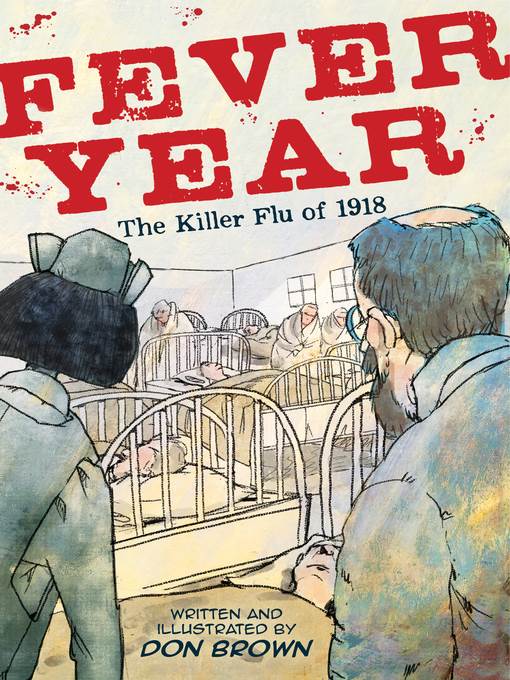
Fever Year
The Killer Flu of 1918
کتاب های مرتبط
- اطلاعات
- نقد و بررسی
- دیدگاه کاربران
نقد و بررسی

July 1, 2019
In 1918, a devastating influenza epidemic swept across the globe, infecting one-third of the world’s population and killing an estimated 50 million people. Organized as “a three-act tragedy,” this slim graphic novel describes the spread of the 1918 Spanish flu with an unemotional narrative voice supplemented by direct quotes from historical accounts. Act I provides historical context and documents the first tremors of the outbreak in the U.S. and its spread to Europe. Act II, the bulk of the book, chronicles the worst of the pandemic, spotlighting the valiant efforts of medical professionals as well as various attempts at cures, from home remedies to the work of dedicated scientists. Act III covers the culmination of the disease and the later discovery of the virus responsible. Though the majority of deaths took place outside of the U.S. and Europe, the book rarely looks beyond these locations. Brown (Drowned City) matches his economical text with art that skillfully depicts the steadily growing horror. Grim figures, often with indistinguishably miserable faces, appear against empty cities and overflowing hospitals or in anonymous crowds of the infected, all painted in a muted, muddy palette that is stark and effective. A succinct epilogue summarizes this already concise introduction to the epidemic and its devastating impact. Final art not seen by PW. Ages 12–up.

July 1, 2019
A general overview of the flu pandemic of 1918. While World War I was raging, a particularly virulent influenza began to strike civilians and soldiers alike. No one knew, at first, that a virus caused the disease, and it spread rapidly and apparently randomly--a fact underscored by Brown's (The Unwanted, 2018, etc.) use of statistics regarding mortality rates and the pace of infection from locations around the globe. One of the more confusing aspects of this flu was that it seemed to strike the healthy and young rather than the old and infirm. But this information, along with other facts--e.g. why black American nurses were not allowed to serve overseas--is not explored further. Also not explored, frustratingly, is what made this particular flu so deadly. The story emphasizes the important work of nurses as well as the complete ineffectiveness of health officials and civic leaders in combating the disease and preventing its spread, but it doesn't delve beneath the surface. Brown's illustrations, done in a sketchy style with a muted palette, are clear but lack vigor. The majority of people portrayed are white, and characters of power and interest are mainly white men, but this white male default as a Western society norm is not challenged. The term "colored" is modified with "sic" but is not contextualized. Long on death, short on depth. (source notes, bibliography) (Graphic history. 12-14)
COPYRIGHT(2019) Kirkus Reviews, ALL RIGHTS RESERVED.

July 1, 2019
Grades 7-10 As WWI neared its end, the world began another war. From army camps to the world's great cities, Brown presents the terrifying influenza pandemic of 1918 as a three-act tragedy. Brown follows the disease's lightning-fast spread carefully, capturing both its large scale and daily effects on a full one third of humanity. Pertinent historic details and quotes heighten the drama, from the denial by authorities? don't even discuss it . . . talk of cheerful things, advised the Philadelphia Inquirer?to the blind search for a cure based on a faulty nineteenth-century theory. Brown is comics' premiere chronicler of historical catastrophes, and he knows that the story requires emotional investment. This he finds by, for instance, highlighting the common bravery of nurses and volunteers, and making keen visual choices: a double-page splash showing the life of the city stopped, and intimate panels depicting family corpses laid to rest in a corner of the household. A somewhat abrupt ending relating a scientist's efforts in 1995 doesn't detract from the urgency of the tale.(Reprinted with permission of Booklist, copyright 2019, American Library Association.)

























دیدگاه کاربران